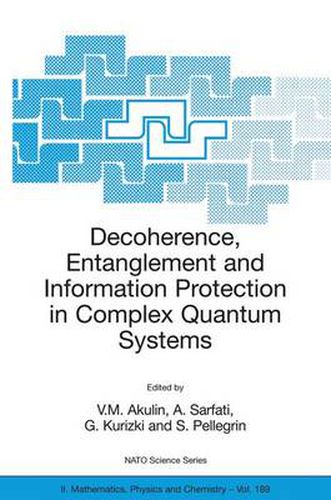Readings Newsletter
Become a Readings Member to make your shopping experience even easier.
Sign in or sign up for free!
You’re not far away from qualifying for FREE standard shipping within Australia
You’ve qualified for FREE standard shipping within Australia
The cart is loading…






This title is printed to order. This book may have been self-published. If so, we cannot guarantee the quality of the content. In the main most books will have gone through the editing process however some may not. We therefore suggest that you be aware of this before ordering this book. If in doubt check either the author or publisher’s details as we are unable to accept any returns unless they are faulty. Please contact us if you have any questions.
Dynamics of an open system interacting with theenvironment considered as a thermostate may be formulatedin terms of a master equation with an integral operator allowing for the relaxation process, [Zwanzig 1960]. In some part- ular cases this operator hasashort-lastingkernel that enables one to consider therelaxation as a Markovian process and to obtainthe master equation inthe Lindblad form, [Lindblad 1976 (a)]. In some situations the memory effects become, however, important and the dynamics of thesystem gets much more involved, [Barnett 2001]. A similar situation arises inthe case where a set of consecutive or continuous measurements is performed. The purpose of this article is to consider a situation where some simplification of the generalform of the master equation with memory isstill possibleand the result isasimpler master equation. In particular, we consider the case of a dynamic system c- pled to a measured ancilla via a nondemolition interaction, [Caves 1980]. This simplifies the consideration essentiallywhereas providing an important special case inwhich the energy of the dynamic part is conserved. We consider a composite quantum system consisting of a dynamic part - teracting with an ancillary part, the latter being subject to repeated projective measurements. The entire quantum system is assumed to evolve unitarily d- ing time ? t between the measurements. As a specific example, we analyze a harmonic oscillator coupledtoatwo-level ancillathat issubject to measu- ments.
$9.00 standard shipping within Australia
FREE standard shipping within Australia for orders over $100.00
Express & International shipping calculated at checkout
This title is printed to order. This book may have been self-published. If so, we cannot guarantee the quality of the content. In the main most books will have gone through the editing process however some may not. We therefore suggest that you be aware of this before ordering this book. If in doubt check either the author or publisher’s details as we are unable to accept any returns unless they are faulty. Please contact us if you have any questions.
Dynamics of an open system interacting with theenvironment considered as a thermostate may be formulatedin terms of a master equation with an integral operator allowing for the relaxation process, [Zwanzig 1960]. In some part- ular cases this operator hasashort-lastingkernel that enables one to consider therelaxation as a Markovian process and to obtainthe master equation inthe Lindblad form, [Lindblad 1976 (a)]. In some situations the memory effects become, however, important and the dynamics of thesystem gets much more involved, [Barnett 2001]. A similar situation arises inthe case where a set of consecutive or continuous measurements is performed. The purpose of this article is to consider a situation where some simplification of the generalform of the master equation with memory isstill possibleand the result isasimpler master equation. In particular, we consider the case of a dynamic system c- pled to a measured ancilla via a nondemolition interaction, [Caves 1980]. This simplifies the consideration essentiallywhereas providing an important special case inwhich the energy of the dynamic part is conserved. We consider a composite quantum system consisting of a dynamic part - teracting with an ancillary part, the latter being subject to repeated projective measurements. The entire quantum system is assumed to evolve unitarily d- ing time ? t between the measurements. As a specific example, we analyze a harmonic oscillator coupledtoatwo-level ancillathat issubject to measu- ments.